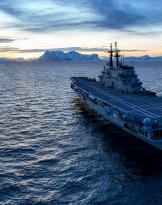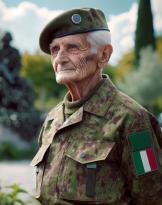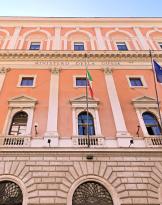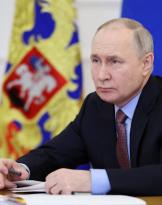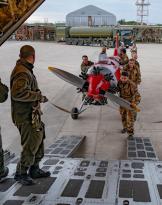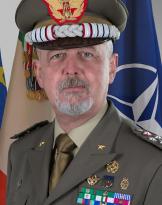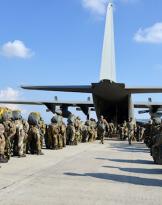On 2 September 2015 the 72nd edition of the Venice International Film Festival will be opened by the screening of the film "Everest", based on the true story of the disastrous climb to the highest mountain in the world by the "Adventure Consultants" group led by New Zealand mountaineer Rob Hall, which took place in the spring of 1996.
TAKE 1: As soon as the group meets in the Nepalese capital Kathmandu, Rob leads a briefing in which he gives the first explanations about the adventure to be undertaken. Rob explains: "It's simple guys: humans are not made to function at the cruising altitude of a 747. Once we get here, over the South Hill, our body will start to die. I mean, literally. (...) So the challenge is: will we be able to take you to the top, and then to Base Camp, before the body dies? "
TAKE 2: To try to overcome the problems of overcrowding on the mountain in those days of May 1996, Rob of Adventure Consultants and Scott Fisher of the competing expedition "Mountain Madness" agree to join forces and share the tasks to be carried out in the ascent phase (fix the ropes, etc.). Just before leaving Base Camp, Rob and Scott hold a joint briefing of the 2 groups. At a certain point, the discussion touches on the topic of the division between the participants of the oxygen cylinders to be brought to the mountain, to improve breathing in case of difficulty. Kazakh mountaineer Anatolij Bukreev, one of the Mountain Madness guides, causing a stir for everyone, says: “I don't use oxygen. Fake air, I don't need it. Never used, and will never use it. You have more problems if it ends. "
TAKE 3: The joint expedition is in trouble. The fixed ropes that must have already been fixed by the Sherpas before the group's departure are not in place and there has been a delay in arranging them. Someone has lost energy and has come back, someone has reached the top and is going back, someone is stuck. The two guides Rob and Scott have lost control of where each participant is and in which direction he is marching, when a very bad storm surprises everyone. Some climbers die exhausted after running out of their oxygen cylinders. Beck Weathers, American climber of Adventure Consultants, blocked by hypothermia, miraculously manages to drag himself to Camp 4, from which his companions communicate via radio to Base Camp that Beck is alive, but that he will not be able to descend with his own strength. Base Camp manager Helen Wilton reports via satellite phone to Beck's wife in the United States, who promptly replies: "Oh, I'll take it down. I'll take it down, OK? What do we need? You need a helicopter, right? " After hanging up, Ms. Weathers organizes by telephone the rescue helicopter that will save her husband's life.
In conclusion, out of 34 climbers on the Everest face, 8 die. It has been observed that the use of oxygen cylinders has historically "allowed many more people, who otherwise would never have been able to find themselves there, to be able to attempt to climb mountains beyond their means, thereby increasing the risks and, consequently, the dead "(source: Wikipedia). Conversely, during the tragic days described in the film, not only Anatolij manages to climb the summit and return unharmed, but none of the clients entrusted to him will die. In addition, Anatolij will be able to save 3 climbers in as many exits from Camp 4 over 8000 meters above sea level. Anatolij will die a year later on the Annapurna, overwhelmed by an avalanche, but that's another story.
The restrictive measures of freedom of movement that the Italian government has imposed on a large majority of citizens for many days are unfortunately very similar to a true Himalayan climb for many Italians. This is obviously due to the fact that too many people have to face many essential expenses during this period of quarantine (such as rent for the house and basic foodstuffs) without being able to work and therefore in many cases without a source of income.
Fortunately, in our country there is the layoff tool for employees with "standard" employment contracts. However, in our country there are many thousands of people, including self-employed workers, trainees, unemployed, undeclared workers, etc., who without adequate aid measures could find themselves in the middle of this emergency phase without the minimum financial resources to cover the incompressible and essential expenses.
Wanting to compare the whole set of natural persons that make up our country to a "collective body", the government's task of studying financial aid measures to allow this collective body to overcome this emergency period without anyone slipping into poverty, can be compared to Rob's task in our Ciak 1: bring everyone to the top, and then down to base camp, without the body dying.
In the United States, President Trump signed a maxi-package of economic stimulus worth two billion dollars a few days ago, to allow the United States to go through the crisis triggered by the pandemic. In particular, each single citizen is expected to receive $ 2000 credited to their bank account for free, while each couple will receive $ 1200. In addition, each parent will receive $ 2400 for each child under the age of 500. This aid is gradually reduced for people who earn more than $ 17 a year, while it is not really expected for people who earn more than $ 75000 a year (the latter two thresholds have doubled for couples).
Many newspapers (in America and elsewhere) have used the expression "Helicopter money", or "money from the helicopter" to describe these aids. This expression probably derives from those accidents that occur from time to time (more in America than elsewhere) in which a value-bearing helicopter carrying kilos and kilos of 100-dollar bills suffers some failure while flying over a large metropolis: a at some point the tailgate opens and an infinity of succulent green bills spill over onto the sidewalks below, frequented by unsuspecting passers-by who grab a lot of money for free, which are then distributed to all without distinction.
It is not my intention to express an accurate judgment on this measure prepared by the American Congress with a bipartisan vote, also because I have not studied it in depth and therefore I cannot exclude that, as the Americans say, "the devil is in the details", that is, the rip-offs are in the details.
However, I would like to underline the goodness, in my opinion, of the general principle of this provision: Aid goes to all citizens below a certain wealth threshold, regardless of their working situation. This is why Trump's "money from the helicopter" can also be compared to ours Ciak 3, in which the helicopter picks up the climber who can't take it anymore and takes him directly to Base Camp.
Instead, I would like to warn our institutions against putting in place aid that is somehow "conditioned" to a future return to normal. I give an example: in our days the proposal to help self-employed workers with VAT number who pay a rent to carry out their business has rebounded in our public debate, giving them the opportunity to postpone the installment of the rent of April until September. In the unfortunate event that September is reached and our self-employed person is still unable to derive a livelihood from his business, how could he pay not one but even two installments of the rent at the same time?
So here is my belief that any kind of help conditioned to a future return to the same job that was done before the pandemic broke out it would be the equivalent of the oxygen cylinder so opposed by the mountaineer Anatolij Bukreev in ours Ciak 2. Worse if the aid ran out before the climb (or the end of the emergency due to this pandemic) came to an end. "You have more problems if it ends".
In my first article "Who knows if thanks to Coronavirus we Italians will find the courage to turn away?" at the end of the emergency, I tried to describe my deep conviction on how deep the impacts of this pandemic will have on human needs, the needs of the environment, and therefore on the economy and on the doctrines that seek to address it. Inevitably, these profound changes will lead to the death of millions of companies all over the world, even in Italy, since their products or services will no longer be required.
In my second article "The financial quarantine" I therefore hypothesized a method, as ordered as possible, to dismantle companies that alas will no longer have a positive role to play in tomorrow's post-Coronavirus world, and at the same time safeguard those that will still have a place on the market. Inevitably, this will lead to millions of layoffs and the need to reconvert the careers of millions of people.
In this third and final article of the series I therefore wish to wish that all these people receive free, immediate and financial assistance not bound neither to one's own pre-crisis professional status, nor to the prospect of a return to "normalcy", given that for many people, at the end of this emergency, normalcy will be something very different from how we understood it until yesterday.
These free and immediate aids to individuals, as far as Italy is concerned, can be realistically financed only through the OMT (Outright Monetary Transaction) program, announced by the Governing Council of the European Central Bank on August 2, 2012. The OMT would consist in the purchase directed by the ECB of short-term government bonds issued in this case from Italy.
One day the good weather will return and we will all have the opportunity to rebuild our private lives, our professional lives, our careers. But until then it would be really dangerous to give our families "oxygen" to continue groping in the storm without having any certainty of where we will find ourselves (and in what conditions) when the oxygen runs out. Much better to opt for an unconditional aid helicopter, which will take us back safely to Base Camp until the storm has passed.
Paul Silvagni
(Economics graduate, former financial advisor, entrepreneur)
Photo: US Air Force


